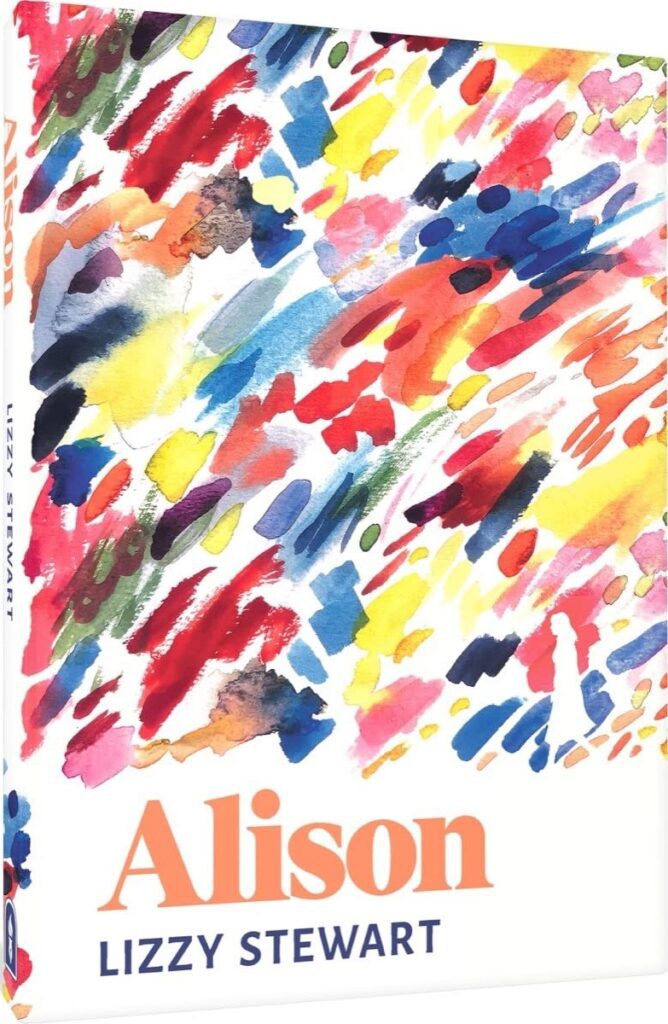
Alison is a plain teenager getting by in a small English town, running out the clock on her high school years as she waits for someone to define her future. Her savior seems to arrive in the form of an equally mediocre neighborhood boy who takes an interest in her, leading to her dropping out of school to get married. However, while he’s content to settle into an ordinary life, she’s eventually led astray by a smooth-talking, middle-aged painter who entices her to move to London to be his muse and lover.
Lizzy Stewart’s new graphic novel charts the adult life of Alison as she slowly learns her own value, finds her own tribe, and falls into a wholly unexpected profession as a painter. Alison is an everywoman who somehow beats the odds to escape a mundane existence, even as she continually questions her right to do so and grapples with her mixed feelings about the role her mentor/predator played in her career path. Stewart paints a richly defined portrait of this most unexpected heroine across multiple decades, revealing the highs and lows that hone an average, listless girl into an acclaimed artist with deep personal relationships.
Stewart’s artist bio describes her as an “illustrator and author”, wholly fitting yet left-field terminology in a comic book industry that typically assigns creators with artist and writer labels. Indeed, she’s taken an unconventional path to this first full-length graphic novel, working as an illustrator for children’s books, a travel guidebook, and self-help guides as she dabbled in short form comics of her own. Fantagraphics published a collection of her comic vignettes two years ago, It’s Not What You Thought It Would Be, revealing an emerging talent experimenting with varying art styles unified by her strong writing. That keen ear for magnificent prose is the biggest revelation of this new book, fully supporting her author designation with passages such as Alison’s insight into her early marriage:
“Two years in I realized that my life was no better or worse because of it. I think every girl wants better or worse, ideally better, I suppose. But sometimes worse can be so delicious, so enlivening that we’ll take it, simply to have something to do.”
Her literary writing is heady stuff in a publishing arena that typically doesn’t rise much above the emotional substance of Snikt! Pow! Krakathoom! She further highlights her text by occasionally employing a hybrid book/comic format, advancing her story via full paragraphs and even pages of text. While the hybrid approach is rife with danger, threatening to alienate comic book readers put off by fancy wordplay and turning off literature snobs with pretty pictures, she’s simply so adept in both fields that the end result is an impressive tour de force.
Stewart employs a loose, flowing line, honing in on the crucial character emotions of each scene rather than fleshing out their backgrounds. Her inked line weight is on the light side, barely thicker or darker than fine pencil lines, giving her characters a sense of impermanence as they drift through their shifting lives. Her line work here adds charm and warmth to the story, especially when she occasionally renders her panels as actual photographs and collages of Allison’s keepsakes, as if we’re partially paging through Alison’s life as compiled in a photo album.
Contrary to the cheerfully colorful cover, Stewart chooses drab gray watercolor and ink washes to shade the majority of her interior pages, as if to emphasize the dreariness of Alison’s existence as she casts about for purpose in life. Even in Alison’s later years as an established artist, the dull tones remain, save for a precious few color splash pages, such as an arresting double-page spread that closes the book. Perhaps this denotes Alison’s skewed ongoing perception of herself as insignificant even when the public has deemed her important, or her weariness as the travails of age and loss of loved ones weigh on her. Whatever the reason, while the monochrome hues show strikingly detailed range and masterful application, the near total omission of color in a story about the life of a painter strikes me as her only small miss in this otherwise exceptional book.
Aside from that personal preference, Stewart has crafted an incredibly accomplished work here that heralds the full emergence of a unique and important talent. While we got glimpses of her artistic range two years ago, this complete and polished long form project displays the best of both worlds of her chosen format, the graphic and the novel.